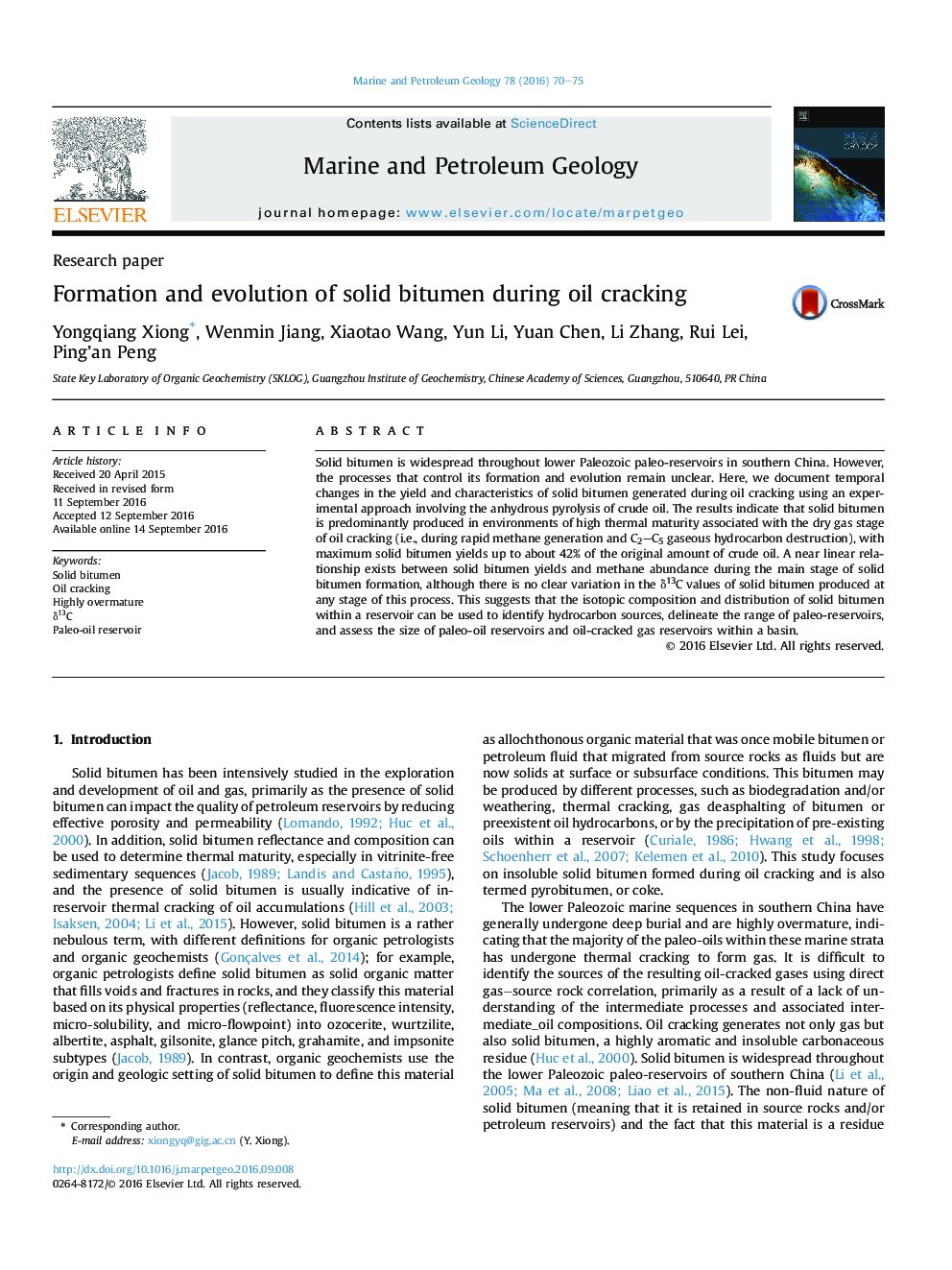| Article ID | Journal | Published Year | Pages | File Type |
|---|---|---|---|---|
| 6434371 | Marine and Petroleum Geology | 2016 | 6 Pages |
â¢Solid bitumen is predominantly produced in the EasyRo range of 2.0-3.5%.â¢A near linear relationship exists between solid bitumen and methane yields.â¢The application of estimation method exists a maturity threshold of 1.5% EasyRo.â¢Î´13C values of solid bitumen can be used to identify hydrocarbon sources.
Solid bitumen is widespread throughout lower Paleozoic paleo-reservoirs in southern China. However, the processes that control its formation and evolution remain unclear. Here, we document temporal changes in the yield and characteristics of solid bitumen generated during oil cracking using an experimental approach involving the anhydrous pyrolysis of crude oil. The results indicate that solid bitumen is predominantly produced in environments of high thermal maturity associated with the dry gas stage of oil cracking (i.e., during rapid methane generation and C2-C5 gaseous hydrocarbon destruction), with maximum solid bitumen yields up to about 42% of the original amount of crude oil. A near linear relationship exists between solid bitumen yields and methane abundance during the main stage of solid bitumen formation, although there is no clear variation in the δ13C values of solid bitumen produced at any stage of this process. This suggests that the isotopic composition and distribution of solid bitumen within a reservoir can be used to identify hydrocarbon sources, delineate the range of paleo-reservoirs, and assess the size of paleo-oil reservoirs and oil-cracked gas reservoirs within a basin.
